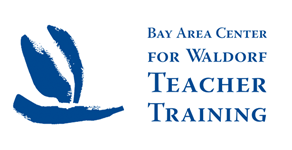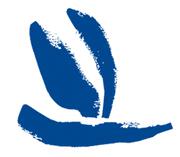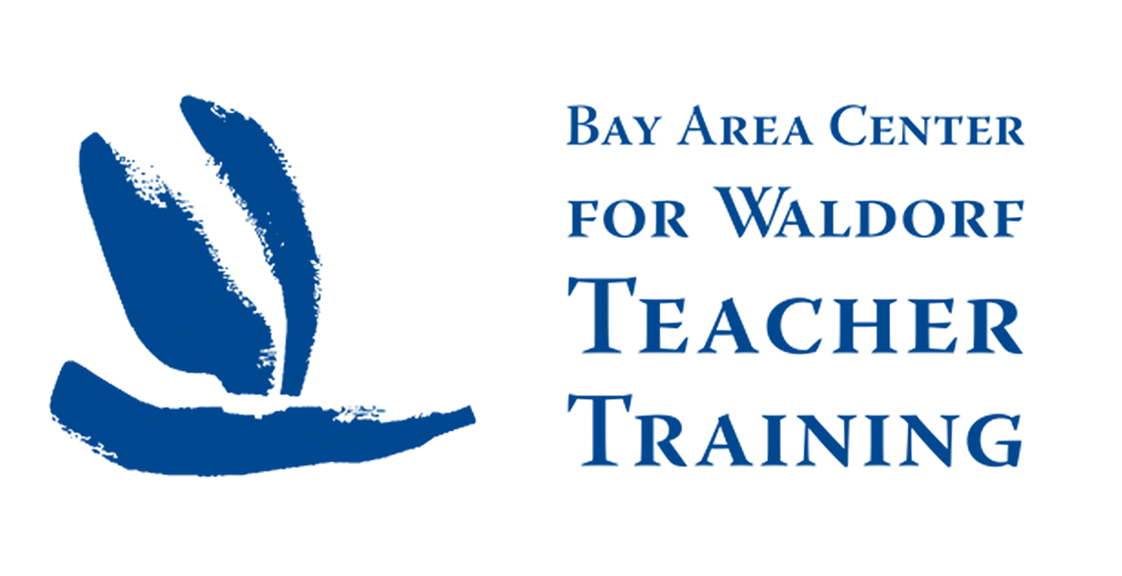Dear BACWTT Students, Alumni, Friends and Colleagues,
Here is the Calendar of the Soul verse for this week:
Verse 5
In Light which from the spirit depths
While weaving fruitfully in space
Reveals the God’s creating
In this soul being becomes manifest
Widened to the life of worlds
And resurrected
From narrow selfhood’s inner power.
This week’s verse builds the connection of the human soul experience with the growing, forming world around us. Steiner presents an image of the creations of life – of God’s creating, which pulls upon the human soul, widening to the life of worlds – and connects this to a pull upon our sense of self.
From a narrow self to a greater expanded sense of self… The line suggests that this change requires letting go of a power and strength that the narrow self has and depends upon, that it will lose this power in the process of expanding – in widening. There is a grand movement through the verses from a “point consciousness” to a “peripheral consciousness” that continues the theme of last week with the theme of the two types of self.
The word “resurrected” jumps out this week. In German, it is “auferstanden.” In both languages, the word creates a strong image of rebuilding and reshaping. In German, the word has a closer connection to uprightness – up standing again, or risen up again. In English, to me, it has more a feeling of rebuilding or constructed again, although there is the hint of “erect” hidden in the sound. The expression clearly refers back in time to the dramatic and mysterious death and overcoming of death of Jesus Christ, to the events of Easter, and also to the thoughts of Goethe.
“Life is her fairest invention, and Death is her device for having life in abundance. She envelops man in darkness, and urges him constantly to the light. She makes him dependent on the earth, heavy and sluggish, and always rouses him up afresh.” Aphorisms on Nature, Johann Wolfgang von Goethe
Steiner uses this expression to characterize the shift from narrow self to widened self: a dramatic shift, coming to life again, a reconstruction – a rebuilding and standing again after a kind of death. In following the process of the Calendar of the Soul, we can see that there is no reference to a death and overcoming of death in the Easter verse, and that this process has been drawn out over these 5 weeks.
In Waldorf education, great importance is placed upon the sense of self of the teacher. We commonly use many different expressions that aim to characterize this capacity that we expect of the Waldorf teacher – their presence in the classroom, how they are able to hold the space, to from the group, to build the social life and culture of the class. It even extends into a mysterious quality summed up in the expression “natural authority.”
These many expressions that we use try to point to this widened and enlivened self, of the capacity to extend the self in numerous constructive ways that are not built upon the character of the narrow self. These widened-self capacities are part of what we try to cultivate in a Waldorf teacher training, as we know they are needed in the classroom and are a key aspect of what we call the art of teaching.
I wonder if other teachers of Anthroposophy have the same problem as me when introducing the 4-fold picture of the human being, and trying to describe the self, “I,” or ego to students in the Foundation course. When drawing the 4 bodies on the chalkboard, do you represent them like Russian dolls going further and further into the body – or like Russian dolls going further and further out around the body?
Our experience is that our self is deep within us – deep inside my body – my center. And yet in trying to understand these bodies, we also have the image of them being less and less incarnated – the physical is the most incarnated, the etheric less so, the astral less so and the ego least of all – so, in a sense, expanding outwards from the body to the ego.
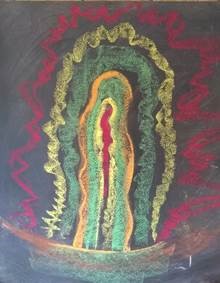
Chalkboard drawing with the physical body in as the center layer (orange) with the 3 others bodies entering more deeply towards the center and also expanding outwards to the periphery.
The image below of a sarcophagus reveals the consciousness of the ancient Egyptian people – their awareness of the layers, the “sheathes” as Steiner also called them, of the 4 bodies of the human being that interpenetrate each other.
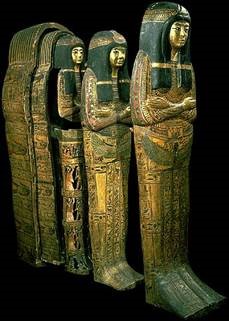
3 layers of an Egyptian sarcophagus which surround the wrapped and mummified physical body remains
Our 3rd Year students have just finished a Waldorf 101 course, a kind of survival course – a course to try to avoid pitfalls – as they near the end of the training. An underlying theme running throughout has been the ways in which the self can trip us up, and specifically how this shows up in the realms of social conflicts, management practices and the care and cultivation of diversity.
We worked with a picture as presented by Friedrich Glasl in his book, Confronting Conflict, of our higher self, our normal self, and our lower self. We can connect Glasl’s working image of a 3-fold self with the idea in this week’s verse when we consider that the self can move into a narrowing direction (lower self) or into a widening direction (higher self). Then the situation becomes more dynamic; it becomes something not fixed but in flux. It can also become a practice, a challenge to the normal self to learn to breathe between the other two.
The course of the year and our contraction and expansion through the weeks then can be-come a guide for a self-mobility practice. I am sure that we all have the experience of classmates or colleagues whose tendency is always towards the widened self, or the re-verse, always towards the narrow self. We might also like to pay attention to see what our own tendency is – and take this up as a practice!
As we came to the end of the course, the approach and subject matter stirred up discussion between the teachers about the many areas of life in the Waldorf school where we know our students will have to find their way. We tried to give our 3rd Year students a picture of a good stance to take, a healthy place to stand and from which to work. Jeff Loubet proposed the stance of the Servant Leader.
Here are his thoughts:
“In the last chapter of The Study of Man, Steiner offered his fledgling teachers pedagogical mantras. I imagine the Good Doctor’s sly smile when he unveiled the first elephant in the room. ‘A teacher must never be sour or pedantic.’
Most of us remember teachers who pigeonholed or judged us with ‘eyes that fix you in a formulated phrase.’ These teachers didn’t have the capacity to see and accept us with all our warts and worries. What essential quality was missing? Now recall a teacher who recognized something unique in you, who found time to care, challenge you, cultivate hidden capacities. What was unique about that teacher? What quality of that individual still resonates in you?
Teachers who listen without judgment, who speak truth with kindness, clarity and compassion are called Servant Leaders in the Waldorf world. Servant Leader – isn’t this an intriguing paradox? How can you lead while serving? Steiner always asks us to embrace pedagogical polarities. ‘Can you be a loving authority? Can you be firm and gentle, cogent and compassionate, clear and caring?’ In Taoism, this capacity to lead naturally without force is called wei wu wei, ‘doing without doing.’ In Christianity, this impulse is expressed as ‘Not I, but Christ in me.’ In Waldorf schools, teachers are servants of the Muses. We strive to em-body archetypes – Truth, Beauty, Goodness – and become vessels for deeper inspiration.
Steiner says we ‘must have courage for the truth.’ If we look to the Latin root of the word courage, ‘cor’ means heart. Courage is heart wisdom, heart conviction. Heart wisdom is clarity rooted in compassion. When you see the other in ‘loving light,’ you hold them with warm interest, empathy and understanding.
A Servant Leader thinks outside the box and seeks inventive solutions. They are not slavishly pedantic. In a rule-bound world, all doors are locked. When you invite an artistic, relational response, new solutions spontaneously arise. Playful innovation, trust and flow – all these are the intangibles that enliven the spirit and inspiration of a school.
A Servant Leader does not hide behind bureaucratic barriers but has the courage and conviction to be vulnerable. If you make a mistake, simply apologize. Humility and honest self-reflection are an essential aspect of being a Servant Leader. Each time you have the opportunity to be open and transparent, you build trust. Each time you make excuses or obfuscate, the walls pile higher, mind forged manacles tighten.”
-Jeff Loubet
In the lectures to the Younger Generation in 1922, Rudolf Steiner is very critical of his con-temporaries needing to have a standpoint, defining themselves by their standpoint.
“What then has come into the twentieth century from the last third of the nineteenth as the customary social feeling between man and man? Nowadays you continually hear: ‘That is my standpoint.’ This is how people talk: ‘That is my standpoint.’ Everyone has a standpoint — as if the standpoint matters! The standpoint in spiritual life is just as fleeting as it is in the physical. Yesterday I stood in Dornach, today I am standing here. These are two different standpoints in physical life. What matters is that a man should have a sound will and a sound heart so that he can look at the world from every standpoint.”
We are challenged now to find a way to continue with our work – our art of teaching. It feels very much that we are being asked not to grow or develop our skills and capacities, but rather to resurrect them. And perhaps we may take heart from Rudolf Steiner not worrying whether he was standing in Dornach or Stuttgart – and try not to worry whether we are standing in front of our class or in our home—but consider rather our stance –not our standpoint but the way in which we are standing!
These words from the 2nd lectures of Man as Symphony are a beautiful guide:
“Thus, when man shall direct his physical gaze upwards with his spiritual gaze downwards, when he shall direct his physical gaze downwards with his spiritual gaze upwards, when he shall direct his physical gaze out-wards towards the east with his spiritual gaze in the opposite direction towards the west — thus when man shall allow above and below, forwards and backwards, spiritual gaze and physical gaze to interpenetrate each other, then he will be able to receive and understand the true calls, bringing him strength and not weakness — the calls of the eagle from the heights, of the lion from the circumference, of the cow from below within the earth.
This is what man should learn in regard to his connection with the universe, so that thereby he may become ever more fitted to work for earth-civilization, and to serve, not its decadence, but its upward progress.”
Ken
Kenneth Smith, Director; BACWTT
